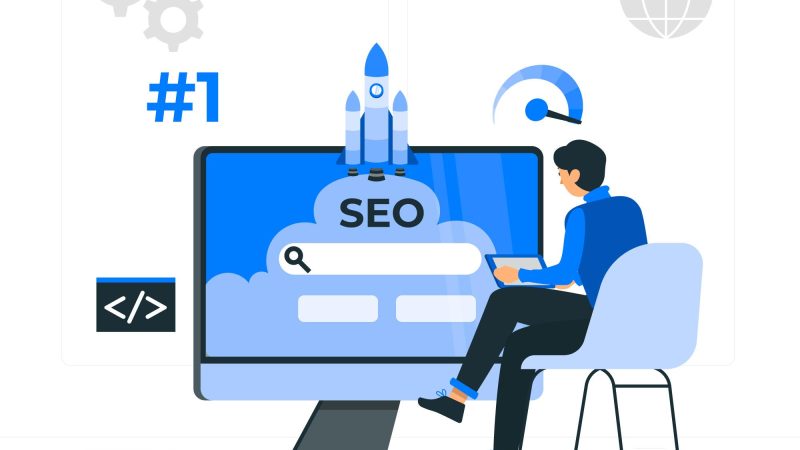How to increase organic traffic: 10 Top SEO tips

While creating an SEO policy – you keep in mind many factors. But, does it guarantee you effectiveness and results? SEO is an ongoing process – you can’t see results in a single day.
To rank higher in SERP, you will have to increase your organic traffic. Organic traffic contributes to more than 50% of traffic in search engines.
Therefore, it is essential to develop a strategy with actionable tips to boost your ranking. Besides, the success factor for traffic is SEO. The more powerful your SEO strategy, the better will be the results. That is why, it is good to hire SEO company by visiting https://seosupport.ca/ in order to get more traffic on your website.
Moreover, the correct implementation of SEO guarantees you visibility and ranking in the top pages of SERP. In the write-up, we will discuss some quick and effective SEO tips to increase your organic traffic.
How to increase organic traffic: 10 Top SEO tips:
- Improve page speed
If your website is slow, it will increase the bounce rate. Besides, users leave a site that does not load in two to three seconds. Improving your website speed is an essential part of optimization.
You can use the Google PageSpeed Insights tool to check your speed and find issues causing slow speed. And since page speed is a ranking factor for Google and technical SEO, you will need to pay special attention to it.
- Start by minimizing the CSS and Javascript
- Compress the site images by using a compressor tool
- Get rid of plugins that are no longer in use
- Use a Content Delivery Network
- Optimize for mobile
More than 60% of the population uses mobile to access products and services. And most people use mobile for browsing the internet. If your website is not mobile optimized – it will affect the organic traffic and reach.
Besides, as a WordPress Developer – it is vital to focus on the mobile responsiveness of the website. A mobile-friendly website is easily accessible to users.
- You can use a WordPress theme that is fully mobile responsive
- You can use third party themes that support mobile optimization
- Update old content
Not updating your old content will cost you, dear. If your old content ranked higher in SERP, repurpose the same content and publish it again. Updating old content helps you stay at top of your competitors – and an updated blog is considered by Google.
Most users check the publishing date before they read the article. Your content needs to be updated according to new terms.
- It builds trust and compels the users to click on the link
- It increases the organic traffic of your website
- Use Google Analytics to know about your website content details
- Add internal links to pages
Internal links are essential for site traffic and ranking purposes. Most SEO experts use linking strategies to make a difference. Moreover, they help new visitors to navigate from page to page. If you want your page to stand out and have the best chance to rank, you can add internal links.
- To find the relevant linking opportunities – you can search Google with keywords
- You can use an SEO tool to overlay SEO metrics and internal linking
- Pay attention to user experience
By improving the user experience, you will improve the chances of ranking. Most websites don’t pay attention to user experience – and it affects the ranking.
User experience is how a customer will interact with a page or how you engage with the visitors. Moreover, your website should load faster and should be easy to navigate.
- Keep the site structure simple
- Increase your load time
- Keep your interface simple for an E-com website
- Optimize for on-page SEO
On-page SEO has a direct impact on your site. With on-page SEO you can optimize Meta descriptions, title tags, and website content. Moreover, it improves visibility in search engines and increases organic traffic.
You can optimize the on-page SEO using the Yoast tool. It comes with many guidelines that will guide you through site optimization.
- You can hire SEO experts that can help with the on-page SEO process
- Do an annual content audit
Content audits analyze different website pages to check whether the content should be deleted or updated. The content which has no traffic can be removed from the website, and the content that is performing well can be updated.
- You can conduct a content audit using Ahrefs free WordPress plugin. Install it, and it will give you suggestions to improve your page
- Access the pages individually if you want good results for the audit
- Implement structured data
A user’s understanding of a website is different from a search engine. Most search engines use a markup language to crawl the site, understand the content and then display the results. With the structured data – search engines will analyze and check if your site meets searchers’ criteria.
- To know about the structured data – you can use Google structured data testing tool. With the tool, you will know if your site uses structured data, copy and paste your URL in the link
- Fix broken backlinks
You need to fix broken links pages as it affects the website ranking. If the page does not exist, it is of no use keeping the link. But how will you know that you have broken links on your site?
- You can use Ahrefs site explorer tool to know about the broken links
- You can fix the broken links by redirecting or reinstating
- Optimize for featured snippets
When Google pulls the information from top-ranking pages and displays it on the front page, it is known as featured snippets. It is vital to optimize your site – for featured snippets to boost organic ranking.
- Organize your content well
- Update your images
- Make sure your blog answers have similar questions
To conclude,
If your site appears in the first few pages, it can increase organic traffic. Follow the above simple ways to optimize your site and – wait to see the results. Consider using the right SEO techniques and tools and realign them with your goals.






